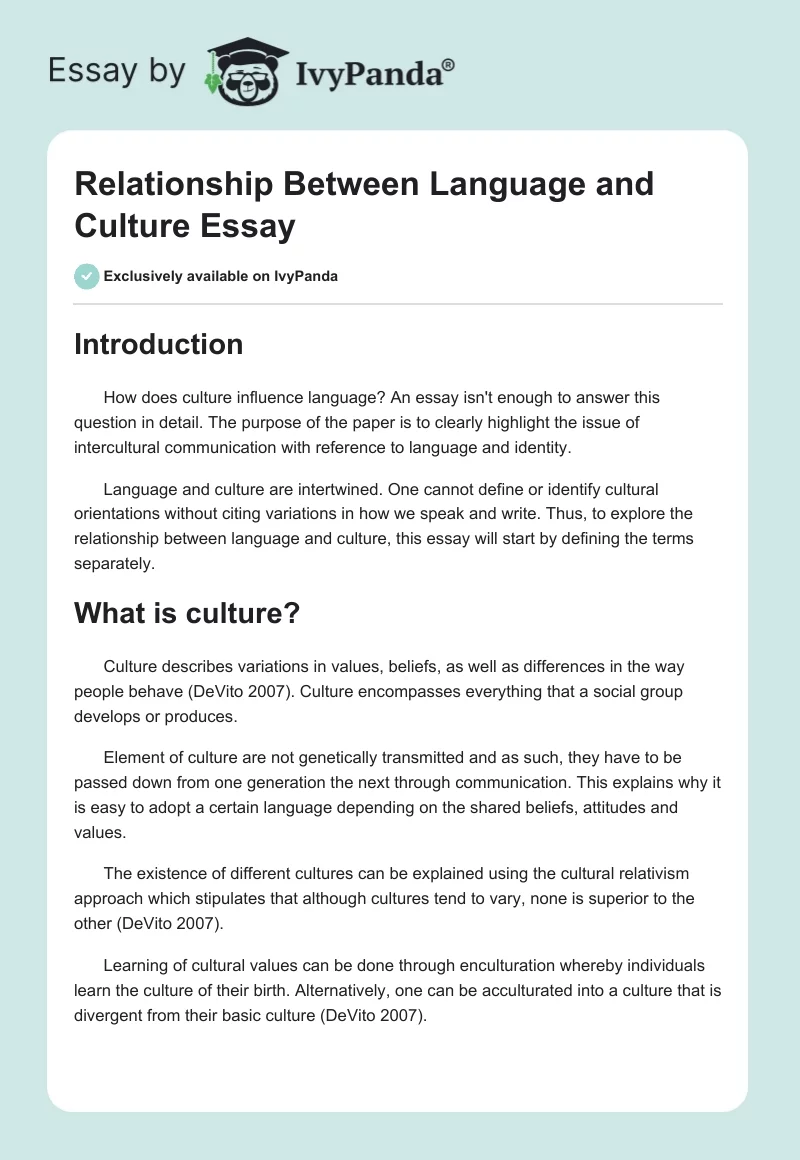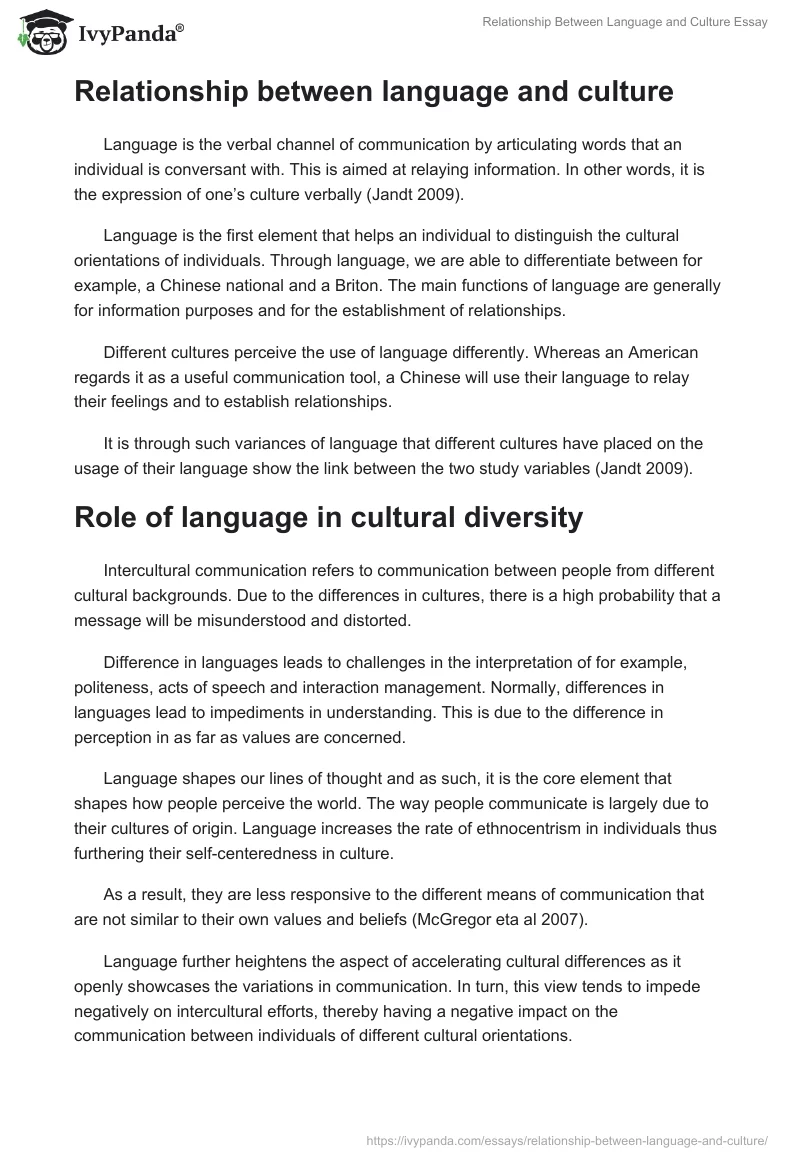Introduction
How does culture influence language? An essay isn’t enough to answer this question in detail. The purpose of the paper is to clearly highlight the issue of intercultural communication with reference to language and identity.
Language and culture are intertwined. One cannot define or identify cultural orientations without citing variations in how we speak and write. Thus, to explore the relationship between language and culture, this essay will start by defining the terms separately.
What is culture?
Culture describes variations in values, beliefs, as well as differences in the way people behave (DeVito 2007). Culture encompasses everything that a social group develops or produces.
Element of culture are not genetically transmitted and as such, they have to be passed down from one generation the next through communication. This explains why it is easy to adopt a certain language depending on the shared beliefs, attitudes and values.
The existence of different cultures can be explained using the cultural relativism approach which stipulates that although cultures tend to vary, none is superior to the other (DeVito 2007).
Learning of cultural values can be done through enculturation whereby individuals learn the culture of their birth. Alternatively, one can be acculturated into a culture that is divergent from their basic culture (DeVito 2007).
Relationship between language and culture
Language is the verbal channel of communication by articulating words that an individual is conversant with. This is aimed at relaying information. In other words, it is the expression of one’s culture verbally (Jandt 2009).
Language is the first element that helps an individual to distinguish the cultural orientations of individuals. Through language, we are able to differentiate between for example, a Chinese national and a Briton. The main functions of language are generally for information purposes and for the establishment of relationships.
Different cultures perceive the use of language differently. Whereas an American regards it as a useful communication tool, a Chinese will use their language to relay their feelings and to establish relationships.
It is through such variances of language that different cultures have placed on the usage of their language show the link between the two study variables (Jandt 2009).
Role of language in cultural diversity
Intercultural communication refers to communication between people from different cultural backgrounds. Due to the differences in cultures, there is a high probability that a message will be misunderstood and distorted.
Difference in languages leads to challenges in the interpretation of for example, politeness, acts of speech and interaction management. Normally, differences in languages lead to impediments in understanding. This is due to the difference in perception in as far as values are concerned.
Language shapes our lines of thought and as such, it is the core element that shapes how people perceive the world. The way people communicate is largely due to their cultures of origin. Language increases the rate of ethnocentrism in individuals thus furthering their self-centeredness in culture.
As a result, they are less responsive to the different means of communication that are not similar to their own values and beliefs (McGregor eta al 2007).
Language further heightens the aspect of accelerating cultural differences as it openly showcases the variations in communication. In turn, this view tends to impede negatively on intercultural efforts, thereby having a negative impact on the communication between individuals of different cultural orientations.
Conclusion
There is need for individuals to evaluate the usage of language in order to effectively interpret the shared meanings that are meant to be communicated. It is important therefore that individuals from a multi cultural context look at each other beyond their differences in order to enable effective communication.
Reference List
DeVito, J A. (2006) Human communication the basic course, 10 th edition. Boston, Mass: Pearson / Allyn and Bacon.
Jandt, F E. (2007) An introduction to intercultural communication: identities in global community. Thousand Oaks: Sage Publications, Inc.
Mohan, T, McGregor, M T, Saunders, H & Archee, S. (2008) Communicating as a professional. Sydney, Australia: Cengage Learning.



